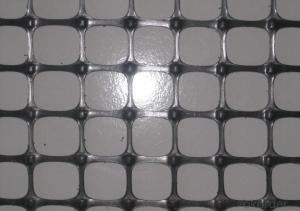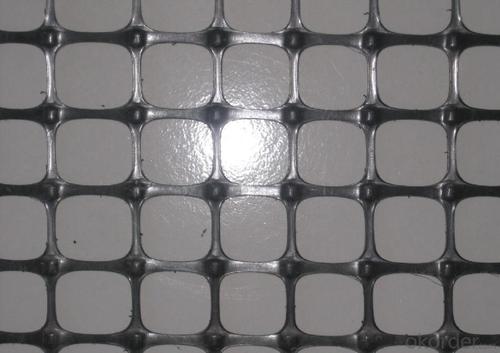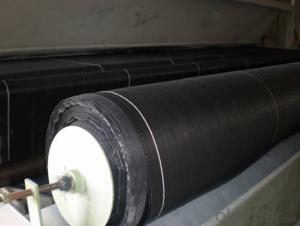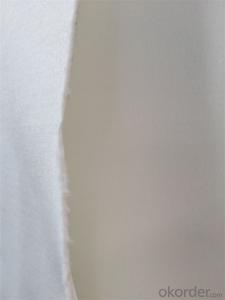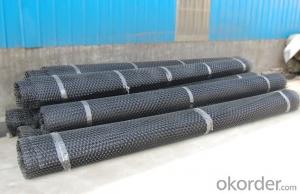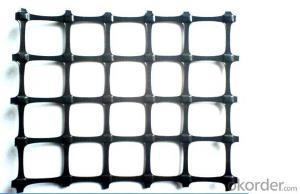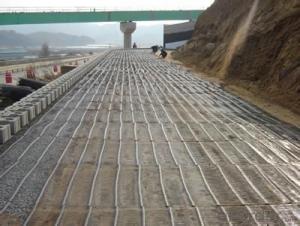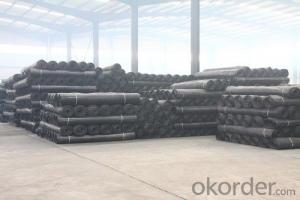Geotextile Maroc PP Biaxial Geogrid with CE Certificate
- Loading Port:
- China Main Port
- Payment Terms:
- TT OR LC
- Min Order Qty:
- -
- Supply Capability:
- -
OKorder Service Pledge
OKorder Financial Service
You Might Also Like
Packaging & Delivery
| Packaging Detail: | Standard export packing or according to customer requirements |
| Delivery Detail: | Within 10-15 days |
Specifications
Biaxial geogrid
1.Width(m):2/3.9/3.95/5/5.9/6
2.Length(m):100/75/50
3.High tensile strength
4.with CE certificat
PP Biaxial Geogrid/geogrid/Biaxial geogrid
Biaxial geogrid is made of polypropylene,mainly applied in highway, railway, slope protecting projects
Function:
1. Improving bearing capacity of road foundation and prolong its service life
2. Preventing road surface from subsiding and cracking
3. Be convenient for construction, reducing cost and maintaining expense for the project
4. Providing stability for slopes and avoid the losing of the water and soil
Specifications
Speification | TGSG1515 | TGSG2020 | TGSG2525 | TGSG3030 | TGSG3535 | TGSG4040 | TGSG4545 | TGSG5050 |
width(m) | 2.5 or3 or 5 or 6 | |||||||
Longitudinal/Transverse Tensile Strength ≥(KN/m) | 15 | 20 | 25 | 30 | 35 | 40 | 45 | 50 |
Longitudinal Elongation≤(%) | 15 | |||||||
Transverse Elongation≤(%) | 13 | |||||||
Transverse Strength at 2% Strain ≥(KN/m) | 5 | 7 | 9 | 10.5 | 12 | 14 | 16 | 17.5 |
Longitudinal Strength at 5% Strain (KN/m) | 7 | 14 | 17 | 21 | 24 | 28 | 32 | |
- Q: How can the geotextile extension of 65 to do the following
- I professional production geotextile geomembrane and other geotechnical materials, wish smooth
- Q: How do geotextiles help in stabilizing embankments?
- Geotextiles provide essential reinforcement and stabilization to embankments by distributing loads, preventing soil erosion, and improving overall slope stability. They act as a physical barrier, effectively separating different soil layers and preventing them from mixing, which helps maintain the embankment's structural integrity. Additionally, geotextiles enhance drainage and filtration, allowing water to flow through while retaining soil particles, thus reducing pore water pressure and preventing saturation-induced failures. Overall, geotextiles play a vital role in enhancing the stability and longevity of embankments.
- Q: Are geotextiles suitable for use in drainage ditches?
- Yes, geotextiles are suitable for use in drainage ditches. Geotextiles can be used as a filtration and separation layer in drainage systems to prevent soil erosion and clogging while allowing water to flow through. They help improve the overall performance and longevity of drainage ditches by enhancing their filtration and drainage capabilities.
- Q: Are geotextiles commonly used in sports field applications?
- Yes, geotextiles are commonly used in sports field applications. They are used to stabilize the soil, control erosion, and improve drainage in sports fields. Geotextiles help to enhance the performance and longevity of the field, making them a popular choice in sports field construction and maintenance.
- Q: How do geotextiles help with soil confinement in erosion control mats?
- Geotextiles help with soil confinement in erosion control mats by providing a stable and permeable layer that prevents soil erosion. They act as a barrier, holding the soil particles in place while allowing water to pass through, thereby reducing surface runoff and promoting root growth. This prevents the displacement of soil and helps in establishing vegetation, ultimately preventing erosion and improving soil stabilization.
- Q: How are geotextiles recycled?
- Geotextiles are typically recycled through mechanical and thermal processes. Mechanical recycling involves shredding the used geotextiles into smaller pieces, which are then processed into new products such as erosion control blankets or construction materials. Thermal recycling, on the other hand, involves subjecting the geotextiles to high temperatures which break down the material into its constituent components for reuse in other applications. Both methods help reduce waste and promote sustainability in the geotextile industry.
- Q: How do geotextiles contribute to the safety of transportation infrastructure?
- Geotextiles play a vital role in enhancing the safety of transportation infrastructure by providing reinforcement, filtration, and separation. They help prevent soil erosion and stabilize the ground, reducing the risk of landslides and sinkholes. Geotextiles also assist in controlling water drainage and filtration, preventing waterlogging and increasing the durability of roads and bridges. Overall, geotextiles contribute to the longevity and stability of transportation infrastructure, ensuring safer and more reliable travel for users.
- Q: What are the key factors affecting the tensile strength of geotextiles?
- The key factors affecting the tensile strength of geotextiles include the type and quality of the materials used, the manufacturing process, the thickness and weight of the geotextile, the orientation and arrangement of the fibers, as well as environmental factors such as exposure to sunlight, moisture, and temperature.
- Q: What are the key properties to consider when evaluating geotextiles?
- When evaluating geotextiles, some key properties to consider include strength, permeability, durability, and compatibility with the surrounding environment. Strength is important to ensure that the geotextile can withstand the expected loads and stresses. Permeability is crucial to allow for proper water flow while preventing clogging. Durability is essential for long-lasting performance in various conditions, such as UV exposure and chemical resistance. Compatibility with the environment involves considering factors like resistance to biological degradation and ability to integrate with the surrounding soil or other materials.
- Q: What is the role of the laying of geotextiles at the bottom of the grassland?
- From the soil and soil, fixed slope protection, anti-erosion, anti-filter (over the water, but soil) and other effects, I professional production geotextile, geomembrane and other products, wish smooth
Send your message to us
Geotextile Maroc PP Biaxial Geogrid with CE Certificate
- Loading Port:
- China Main Port
- Payment Terms:
- TT OR LC
- Min Order Qty:
- -
- Supply Capability:
- -
OKorder Service Pledge
OKorder Financial Service
Similar products
Hot products
Hot Searches
Related keywords
